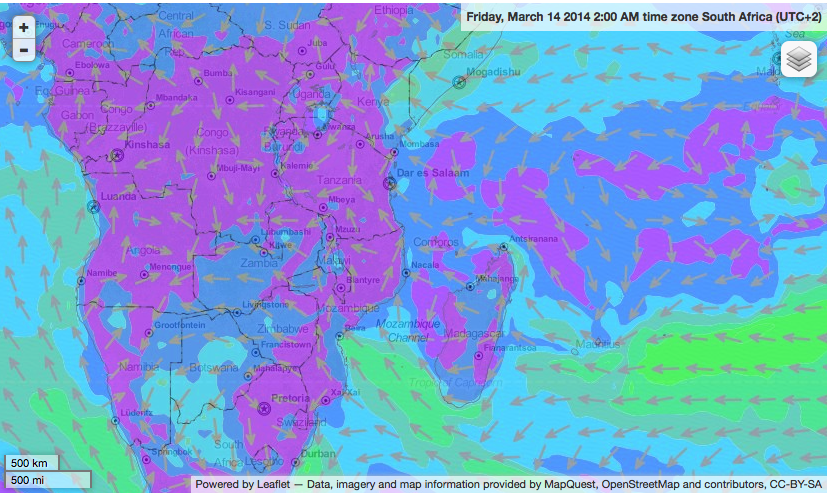image courtesy of wunderground.com
As you can see from the satellite image, most of the clouds surrounding Harare are cold clouds. These clouds develop higher in the atmosphere and is responsible for most of the precipitation over Harare. The low elevation warm clouds signified by the grey areas are very sparse and have less effect on daily weather than the vast cold clouds hovering over it. The higher elevation clouds form because of the high elevation that Harare lies at, and orographic lifting pushes the air further up past where clouds would normally form in the atmosphere. Though Zimbabwe is landlocked, Harare is close to Lake Manyame, about 30km east. The type of clouds that form over the lake are low-lying warm clouds.
image from intellicast.com
This is a surface pressure map of South Africa. There is a high pressure system covering most of the region in this map, with the center right on the coast of the south tip of Africa. The isobar pressures observed are 1020 millibars (mb) at the center of the high, 1016 mb and 1012 mb as we move further away from the center. Because the isobars are spaced out, the pressure gradient isn't very high so the winds aren't very strong. There is a stationary front of the eastern coast of Africa, but it isn't affecting the weather very much over land.
image from intellicast.com
Over the continent of Africa, there is a low pressure system forming in the Northwestern region, though there aren't very many low pressure readings on the surface analysis map. There are two high pressure systems affecting Africa, one directly north of the continent, and the other on the southern border of the continent. Both high pressure systems have a center pressure reading of 1020 mb, with readings of 1016 mb, 1012 mb, and 1008 mb all spaced far apart. This signifies a low pressure gradient over a large distance, which means the wind isn't very strong in the entire region. The only front close to the African continent is a stationary front off the southeastern coast of Africa.



